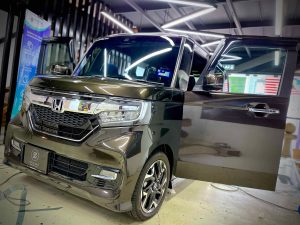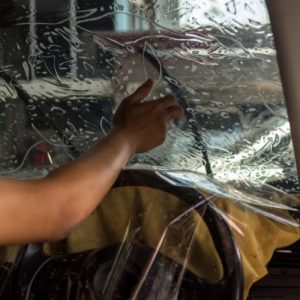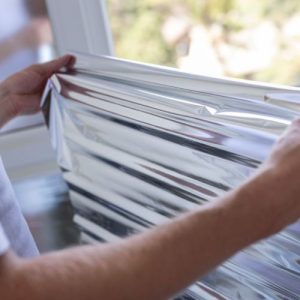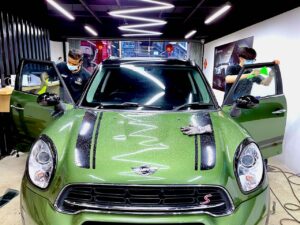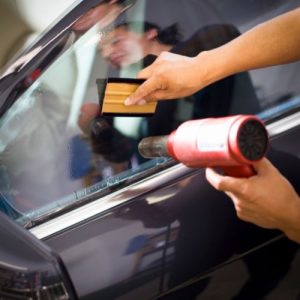Car Coating vs Car PPF
is a decision that many car enthusiasts and everyday drivers alike face when looking for long-term paint protection. While both methods are designed to preserve the exterior appearance and value of your car, they function very differently and come with unique advantages depending on your needs.
Car coating, typically ceramic or graphene-based, provides a durable chemical bond to your paint surface. It enhances gloss, repels water and dirt, and makes regular washing much easier. However, it’s not designed to prevent physical damage like chips or deep scratches — its primary role is chemical and UV protection along with that showroom-like finish.
Car PPF (Paint Protection Film), in contrast, is a thicker physical barrier that’s applied to the surface of your car like a wrap. It’s engineered to absorb impacts from road debris, prevent scratches, and even self-heal minor abrasions with heat. This makes it a top choice for high-impact zones or full-body protection, especially for newer or high-value vehicles.
When comparing Car Coating vs Car PPF, it’s not always about choosing one over the other. Many car owners opt for a hybrid approach — applying PPF on vulnerable front areas like bumpers and hoods, and coating the rest of the car for shine and easy maintenance. Whichever route you choose, understanding the strengths and limitations of each will help you invest wisely and ensure your vehicle stays looking its best for years to come.
1. Surface Preparation Is Key
Before a film even touches your window, the surface must be:
Cleaned thoroughly
Free from oil, dust, grease, or old adhesive
Wiped down with proper tools (not reused rags)
A careless installer might leave behind tiny dirt particles — which causes:
Visible bubbles
Peeling over time
Shortened tint lifespan
✅ At Shield Smith, we prep every window with detailing-grade cleaning products and strict no-dust protocols.
2. Cutting & Fitment Precision
A good installer:
Measures accurately
Uses precise tools or pre-cut templates
Leaves no visible light gaps along the edges
A poor installer:
Cuts too short or too big
Leaves overlapping edges, light leaks, or scratched trims
✅ Our installers are trained to match film fitment to every vehicle’s curve — especially modern cars with frameless windows or slanted windshields.
3. Knowing the Right Film for the Right Glass
Not all film suits all glass.
A trained installer understands:
How each film reacts to curved glass
What VLT to recommend for front vs rear (while staying JPJ compliant)
Which films allow Smart Tag/GPS signal to pass through
✅ At Shield Smith, we don’t just install — we consult. We guide you based on your car model, usage, and expectations.
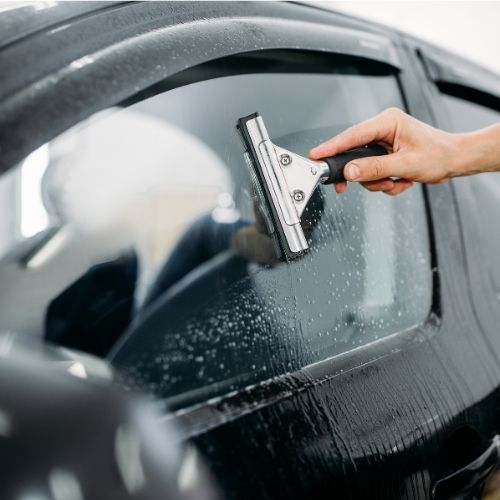
4. Curing Time and Aftercare Guidance
An experienced installer knows that film needs time to bond (cure) fully:
They’ll tell you when to roll down windows
They’ll warn about initial haze or bubbles (which go away during curing)
They’ll explain how to care for the tint properly — especially during the first 7 days
✅ We provide every customer with a post-installation care guide — so your tint stays flawless.
5. Warranty Isn’t Just a Paper — It’s a Promise
A professional installer gives you:
An official warranty card (not verbal only)
Brand transparency (no “OEM” mystery tint)
Real support if problems occur
At Shield Smith, we don’t just disappear after tinting. We’re here for the long run — with a real team, real records, and real after-sales support.

